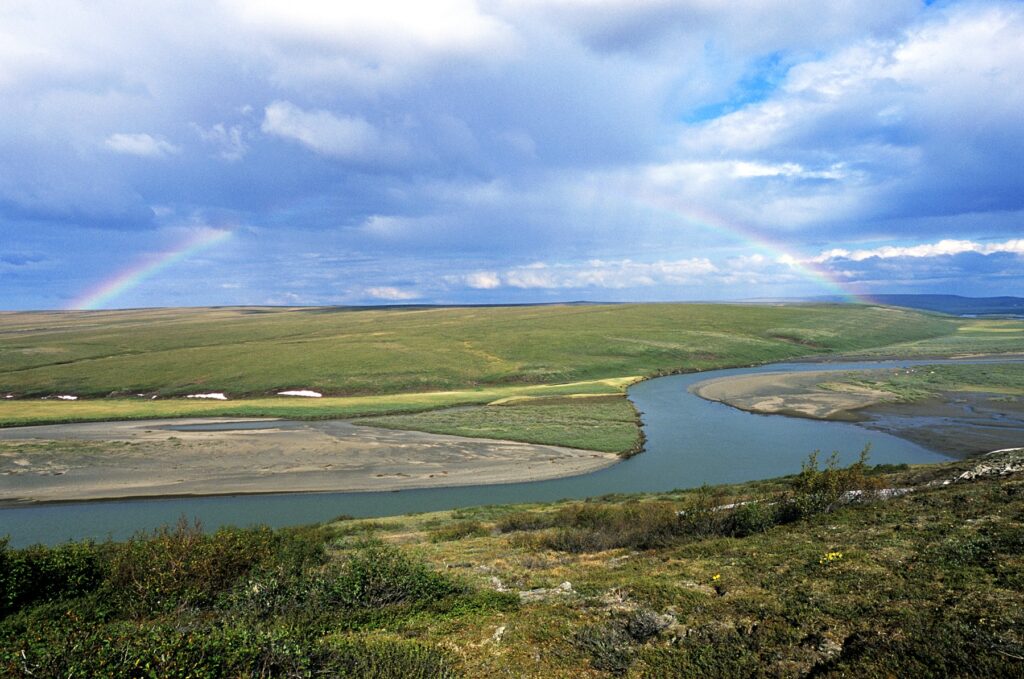Trump’s latest attack would open 82% of America’s largest block of public land to oil and gas leasing

FOR IMMEDIATE RELEASE
Date: 6/18/2025
Contact: Anja Semanco | 724-967-2777 | anja@alaskawild.org
Trump’s latest attack would open 82% of America’s largest block of public land to oil and gas leasing
The Trump administration’s proposed drilling rollback sacrifices caribou, climate, and Indigenous rights for fossil fuel expansion in Alaska.
Washington, D.C. – Late in the day on June 17, the Trump administration released an Environmental Assessment (EA) that marks a major step toward gutting sensible protections for Alaska’s Western Arctic, by reinstating a dangerous, pro-drilling Trump-era plan from 2020. If finalized, this plan would open 82% of the region—including the entirety of the Teshekpuk Lake Special Area—to oil and gas leasing, posing severe risks to wildlife, climate stability, and subsistence resources that sustain Indigenous communities.
The Western Arctic—also known as the National Petroleum Reserve-Alaska—is the largest single unit of public land in the nation. While it includes areas open to energy extraction, it also encompasses five Special Areas set aside for their exceptional wildlife, subsistence, and cultural values. These lands are home to millions of migratory birds, caribou herds vital to Native subsistence, and some of the most fragile tundra ecosystems on Earth.
“This is a full-scale assault on the Western Arctic,” said Kristen Miller, Executive Director at Alaska Wilderness League. “It ignores science, silences local voices, and sacrifices Alaska’s public lands and our climate future for the greed and profits of oil executives. This is not just about a management plan, it’s about whether we treat the Western Arctic as a living, breathing ecosystem, or as a sacrifice zone for the benefit of Trump’s billionaire friends.”
What’s at Stake
- Teshekpuk Lake Special Area: The new plan would remove key protections and allow leasing across this critically important region. Teshekpuk is an essential calving ground for caribou and a global bird migration hotspot.
- Colville River Special Area: This Special Area— established to protect raptors, moose, fish, and subsistence resources—would be eliminated entirely.
- Wildlife and Subsistence Threats: Pipelines, roads, and oil rigs would disrupt sensitive habitat, fragment migration corridors, and increase the risk of toxic spills.
- Climate Consequences: Opening 82% of the Western Arctic to drilling would lock in fossil fuel emissions for decades to come, in a region already warming four times faster than the rest of the planet.
- Disregard for Public Process: The EA comes with a shockingly short 14-day public comment period, while another overlapping comment period on rescinding Biden’s Special Area protections is also underway, raising concerns that the administration is deliberately creating confusion to suppress public input.
A Whiplash Reversal of Progress
In 2013, after extensive public input and scientific review, the Obama administration adopted a balanced management plan for the Western Arctic that allowed energy development on 11.8 million acres while strengthening protections for the region’s most sensitive areas.
The Trump administration threw out that plan in 2020, expanding leasing to 18.6 million acres—roughly 82% of the Western Arctic—and rolling back critical protections. In 2022, the Biden administration reinstated the Obama plan, and in early 2024 issued additional regulations to better protect the region’s five Special Areas. A public process was launched earlier in June to evaluate whether those new Special Area protections should remain in place.
Today’s EA makes clear: the Trump administration is attempting to erase that progress in a matter of days.
###
Photo credit: Dave Shreffler
